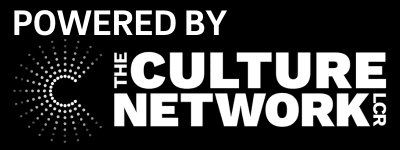Keith Haring’s vibrant and iconic creations are currently being showcased at Tate Liverpool, 14 June – 10 November 2019, as the UK’s first major exhibition of his artwork.

Coming from the New York art scene, Haring drew on graffiti, pop art and underground club culture for inspiration. He has been highly influential since his rise to fame in the 1980’s, shining light on pressing social issues including politics, racism, drug addiction, the environment, homophobia and AIDS awareness.
The artist devoted his time to creating truly public art, making a name for himself by drawing on unused advertising panels in local subway stations. Covered in matte black paper, they made the perfect canvas, and soon his white chalk drawings became familiar to commuters of all kinds. He was often arrested for vandalism, while a number of policemen considered themselves to be his fans.
Throughout his career, Haring worked alongside world renowned music artists and fashion designers – including the likes of David Bowie and Vivienne Westwood – once again expanding his audience as he introduced his work through a large variation of mediums. Andy Warhol was by far his most admired fellow artist, who quickly became his mentor and dear friend following Haring’s second exhibition at the Tony Shafrazi Gallery in 1984, where they met.
Having achieved international recognition, Haring opened the Pop Shop in 1986, which he considered to be an extension of his work. He painted the interior as an abstract mural, covering the ceiling, walls and floor in black and white paint. Despite criticisms from his peers in the art world, he went ahead. Selling posters, magnets, tees and more, his artwork became even more accessible to the public, allowing anyone to walk in and buy something to cherish at a low cost.

Using his fame for the good of the people, Haring’s legendary ‘Crack is Wack’ mural was made during the crack cocaine epidemic in 1986, big, bright and close enough for passing cars on the nearby road to see. Although he initially painted it without any permission, the piece was immediately put under the protection of the City Department of Parks.
If that isn’t Haring’s most famous and impactful piece, then it has to be ‘Ignorance = Fear’, his interpretation of the ancient Japanese proverb, three wise monkeys. The artist used the same hand gestures – see no evil, hear no evil, speak no evil – to convey the struggles faced by those living with AIDS, after being diagnosed himself in 1988. Soon after, he set up the Keith Haring Foundation, providing funding and imagery to AIDS organisations and children’s programmes, and sadly died in 1990 due to health complications.
The exhibition itself will include over 85 bold pieces and related events will be available for Tate Members to attend on Thursday 13th June, such as the private viewing, curator talk and guided tour. An official after party will also take place at Constellations, hosted by Liverpool’s own Sonic Yootha.

